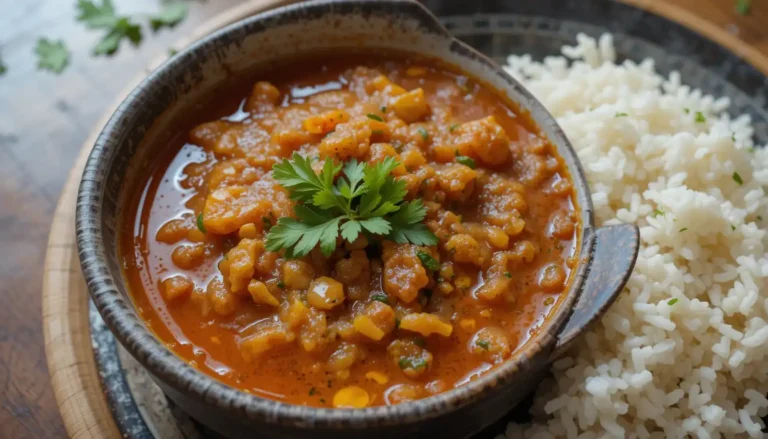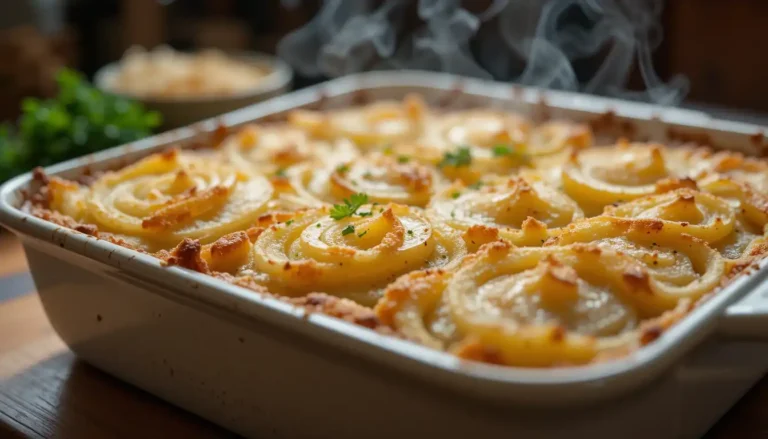Blissful Fesenjan: The Delightful Persian Stew
Welcome, fellow food lover! Prepare to embark on a delicious adventure into the heart of Persian cuisine. Today, we’re exploring Fesenjan (also spelled Fesenjoon), a truly iconic stew that captivates with its luxurious texture and an unforgettable symphony of sweet, sour, and nutty flavors. More than just a recipe, Fesenjan is a culinary heirloom, a dish steeped in ancient history and often the centerpiece of joyous celebrations and special gatherings. By the time you finish reading, you’ll not only possess a fantastic, easy-to-follow recipe but also a profound appreciation for this Persian treasure. So, tie on your apron, and let’s unlock the secrets to perfect Fesenjan together!
**
What is Fesenjan? Unveiling a Persian Culinary Treasure
Before diving into the cooking, let’s get acquainted with what makes Fesenjan so special. This isn’t just any stew; it’s a dish with a story, a rich cultural tapestry woven with threads of history, tradition, and exquisite taste.
A Taste of History: The Ancient Roots of Fesenjan
The story of Fesenjan begins in ancient Persia, with roots tracing back to the Sassanid Empire (224 to 651 AD). It is widely believed to have originated in the lush Gilan province, nestled by the Caspian Sea. This region, historically abundant in wild ducks, walnuts, and pomegranates, naturally provided the foundational ingredients for this celebrated dish. The very essence of Fesenjan seems to be a culinary reflection of Gilan’s bounty, a testament to how a region’s local environment and available produce can shape its gastronomic identity. This connection between the land and the plate is a powerful reason for Fesenjan’s distinct character and its enduring presence through centuries.
Archaeological findings, such as stone tablets unearthed from the ruins of Persepolis dating back to 515 BCE, list pantry staples like walnuts, poultry, and pomegranate products, suggesting that the core components of Fesenjan were part of the Persian diet for millennia. While its lineage is ancient, the earliest known written documentation detailing various types of Fesenjan comes from Mirza Ali-Akbar Khan Ashpazbashi’s “Sofra-ye at’ema” in 1881, which cataloged ten different versions, including the now-common walnut Fesenjan, alongside variations made with almonds, eggplant, and even fish. This demonstrates the dish’s adaptability and evolution even by the 19th century.
More Than a Meal: Fesenjan in Persian Culture
Fesenjan holds a place of honor in Persian cuisine. It’s not an everyday meal but rather a dish reserved for moments of celebration and significance. It frequently graces tables during Yaldā Night (the winter solstice), Nowruz (Persian New Year, particularly if the weather is cooler), weddings, and other festive gatherings. The pomegranate, a key ingredient, is itself laden with symbolism in Persian culture, often representing fertility, abundance, and the beauty of nature.
Interestingly, Fesenjan has also found a place in Jewish Rosh Hashanah celebrations, where its characteristic blend of sweet and sour flavors is thought to symbolize the varied experiences anticipated in the year ahead. This cross-cultural adoption speaks volumes about its universal appeal.
The esteemed status of Fesenjan is further highlighted by the old Persian expression, “he behaves as if he has had partridge and fesenjān,” used to describe someone showing off or acting pretentiously. This saying implies that Fesenjan was considered “a rich man’s dish.” The ingredients, particularly large quantities of walnuts and, historically, game birds like duck or partridge, would have been relatively expensive or required significant effort to procure. Coupled with its elaborate and often time-consuming preparation , serving Fesenjan was a clear display of hospitality, affluence, and the importance of the occasion. Even today, preparing Fesenjan carries a sense of honoring tradition and treating guests or family to something truly special.
The Heart of Fesenjan: Understanding Key Ingredients
The magic of Fesenjan lies in the harmonious interplay of a few key ingredients, each playing a crucial role in creating its unique flavor and texture profile.
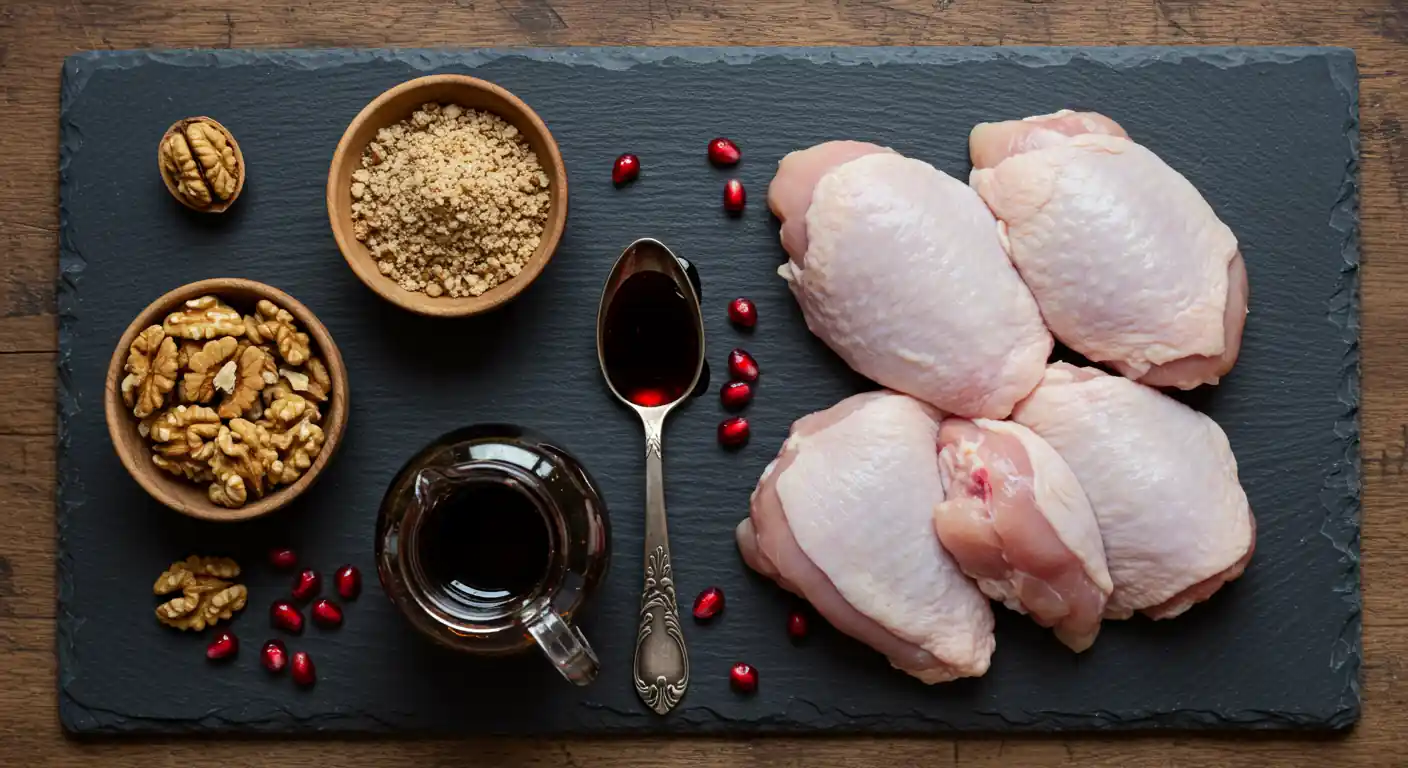
Walnuts: The Rich, Nutty Foundation
Ground walnuts are the soul of Fesenjan’s sauce, providing its characteristic richness, a wonderfully creamy texture, and a deep, earthy flavor that is simply irresistible. To unlock their full potential, walnuts are often lightly toasted before being ground. This step not only enhances their nutty aroma but also helps them release their natural oils, which contribute significantly to the sauce’s luxuriousness and can even create a desirable subtle sheen on the finished stew. In the traditional Iranian system of “garm” (hot) and “sard” (cold) foods, walnuts are considered “garm,” contributing to Fesenjan’s overall classification as a “hot” dish, believed to provide warmth and energy.
Pomegranate Molasses: The Sweet & Sour Soul
If walnuts are the soul, then pomegranate molasses is the vibrant heart of Fesenjan. This thick, syrupy condiment, made by reducing pomegranate juice to concentrate its flavors , is responsible for the stew’s signature sweet-tart (or tangy) taste and its beautiful, deep dark brown color. It provides a crucial counterpoint, cutting through the richness of the walnuts with its bright acidity and lending a complex sweetness that makes Fesenjan so addictive.
Choosing Your Protein: Chicken, Duck, and Delicious Alternatives
Traditionally, Fesenjan is made with poultry. Duck, with its rich flavor, is often cited as the original protein, especially in its homeland of Gilan province. However, chicken has become a very popular and more readily available modern adaptation. Chicken thighs or legs are particularly recommended for their succulence, as they remain tender and juicy during the long simmering process. Beyond poultry, Fesenjan can also be prepared with minced meat (such as lamb, sheep, or beef), meatballs, or chunks of lamb.
Aromatic Spices: The Supporting Symphony of Flavors
While walnuts and pomegranate molasses are the stars, a supporting cast of aromatic spices adds layers of complexity and warmth. Common additions include turmeric, for its earthy notes and golden hue; cinnamon, for its warm, woody fragrance; and sometimes saffron, for a touch of luxury, floral aroma, and vibrant color. Cardamom or a hint of orange peel can also be used.
The genius of Fesenjan’s flavor profile lies in the powerful synergy between the primary ingredients – the nutty, rich, slightly bitter walnuts and the sweet, sour, tangy pomegranate molasses. These two create a complex canvas of flavors. The spices are intentionally subtle, adding nuanced aromatic layers rather than dominating the palate. This careful balance is key; over-spicing could easily overwhelm the delicate harmony that makes Fesenjan unique. This traditional understanding extends to balancing not just flavors but also the perceived energetic properties of ingredients, such as the “hot” nature of walnuts.
The Ultimate Fesenjan Recipe: Step-by-Step to Perfection
Now that you understand the essence of Fesenjan, it’s time to create this masterpiece in your own kitchen. This recipe is designed to be straightforward, guiding you to a delicious and authentic result.
What You’ll Need: Ingredients & Equipment
First, let’s gather our components. A well-organized ingredient list is the first step to a successful dish. Presenting this in a table makes it easy to scan and ensures you have everything on hand.
Table 1: Fesenjan Ingredients & Quantities (for 4-6 servings)
| Ingredient | Quantity | Notes |
|---|---|---|
| Chicken | approx. 2 lbs (900g) | Bone-in, skin-off thighs or a whole chicken cut into 8 pieces |
| Walnuts | 2.5 cups (approx. 250-300g) | Shelled |
| Pomegranate Molasses | $ \frac{3}{4} $ to 1 cup (180-240ml) | Adjust to taste and molasses tartness |
| Onion | 1 large | Finely chopped |
| Olive Oil or Neutral Oil | 2 tablespoons | For browning chicken and sautéing onion |
| Ground Turmeric | 1 teaspoon | |
| Ground Cinnamon | $ \frac{1}{2} $ to 1 teaspoon | |
| Saffron Threads (optional) | $ \frac{1}{4} $ teaspoon | Bloomed in 2 tbsp hot water |
| Sugar (optional) | 1-2 tablespoons | Brown or granulated, to balance tartness; adjust to taste |
| Water or Chicken Stock | 2-3 cups (480-720ml) | As needed for desired consistency |
| Salt | To taste | |
| Freshly Ground Black Pepper | To taste |
Essential Kitchen Tools:
- Large Dutch oven or heavy-bottomed pot with a tight-fitting lid
- Food processor (for grinding walnuts)
- Skillet (if you prefer to brown chicken separately, though it can be done in the Dutch oven)
Crafting Your Fesenjan: The Detailed Method
Follow these steps carefully, and you’ll be rewarded with a truly exquisite stew.
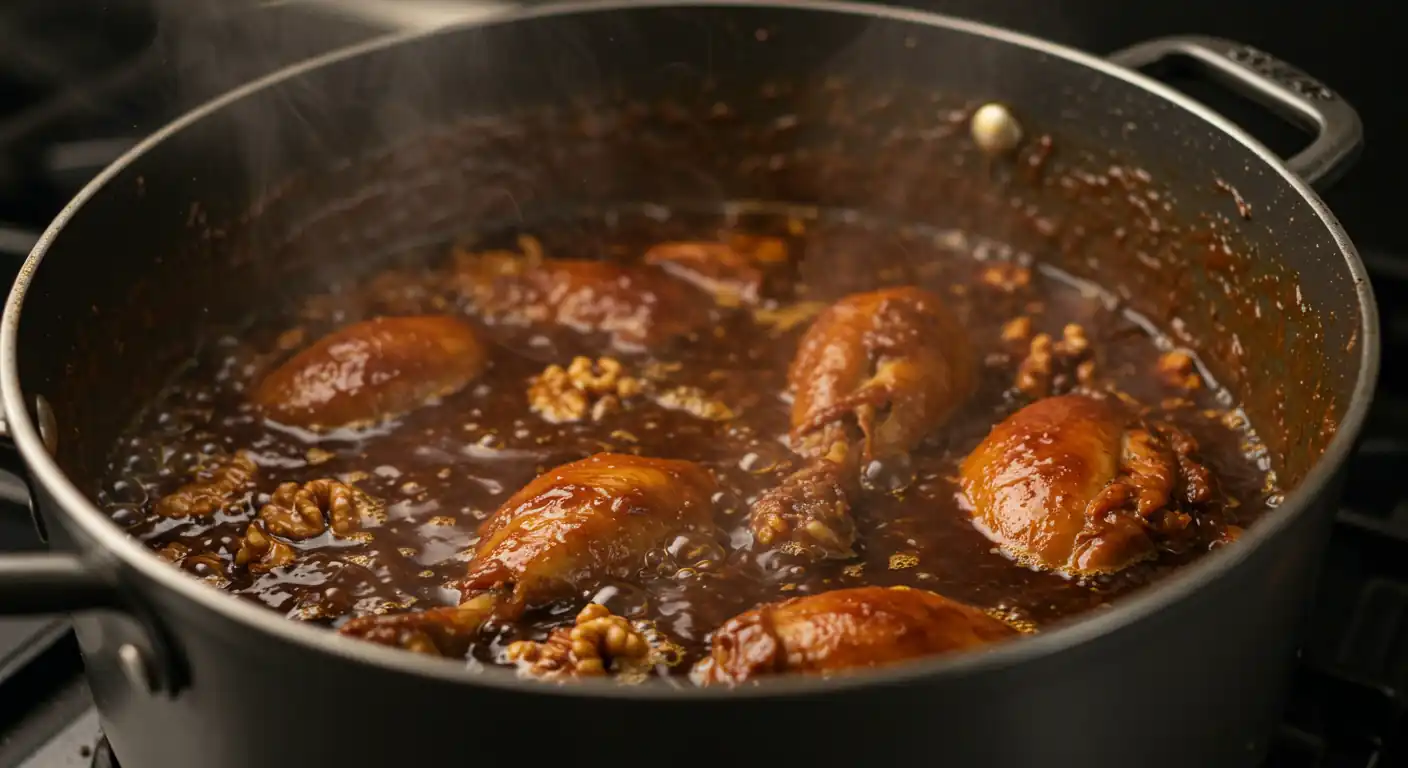
- Prepare the Walnuts:
- Lightly toast the walnuts. You can do this in a dry skillet over medium heat for 5-7 minutes, stirring frequently until fragrant, or spread them on a baking sheet and toast in a preheated oven at 350°F (175°C) for 7-10 minutes. Keep a close eye on them to prevent burning.
- Once cooled, grind the toasted walnuts in a food processor until they form a fine meal, almost like coarse sand that clumps together. Be careful not to over-process into walnut butter, though some recipes do prefer a paste-like consistency. Some cooks like to leave a little texture.
- Prepare and Brown the Chicken:
- Pat the chicken pieces dry and season generously with salt, pepper, and about half of the turmeric.
- Heat the oil in your Dutch oven or large pot over medium-high heat.
- Carefully add the chicken pieces to the hot oil, being sure not to overcrowd the pot (work in batches if necessary). Brown the chicken on all sides until lightly golden, about 8-10 minutes per batch. This searing step builds a wonderful depth of flavor.
- Remove the browned chicken from the pot and set aside.
- Sauté Aromatics:
- To the same pot, add the finely chopped onion. Reduce heat to medium and cook, stirring occasionally, until the onion is softened and translucent, about 5-7 minutes. For an even deeper flavor, you can caramelize the onions slowly over low heat for 20-30 minutes, though this is optional.
- Add the remaining turmeric and the ground cinnamon. Stir and cook for another minute until the spices are fragrant.
- Build the Sauce:
- Add the ground walnuts to the pot with the onions and spices. Stir continuously for 2-3 minutes, allowing the walnuts to toast slightly more and release their fragrant oils.
- Stir in the pomegranate molasses. Then, gradually add the water or chicken stock, stirring to combine everything smoothly. If using, add the optional sugar and bloomed saffron (saffron threads steeped in a little hot water) at this point.
- Combine and Slow Cook:
- Return the browned chicken pieces (and any accumulated juices) to the pot, nestling them into the sauce.
- Bring the stew to a gentle simmer. Once simmering, reduce the heat to the lowest possible setting, cover the pot tightly, and let it cook for at least 1.5 to 2 hours. Some traditional recipes call for even longer. The chicken should be incredibly tender, almost falling off the bone, and the sauce should have thickened and darkened considerably.
- Stir the Fesenjan occasionally, especially towards the end of cooking, to prevent the bottom from sticking, as pomegranate molasses can be prone to scorching.
- Final Adjustments:
- After the long simmer, taste the sauce. Now is the time to perfect its balance. If it’s too tart for your liking, add a little more sugar (or honey). If it’s not tart enough, you can add a touch more pomegranate molasses or a tiny squeeze of lemon juice. Adjust salt and pepper as needed.
- Check the consistency. If it’s too thin, you can simmer it uncovered for a bit longer or add a little more ground walnuts. If too thick, stir in a splash of hot water or stock.
**
Chef’s Notes: Achieving Fesenjan Excellence
A few extra pointers can elevate your Fesenjan from great to truly exceptional:
- The Magic of Slow Simmering: Do not rush the cooking process. The long, slow simmer is absolutely crucial. It’s not just about making the chicken tender; it’s during this time that the ground walnuts fully release their oils, creating that signature rich, velvety sauce with a beautiful sheen. The flavors of the walnuts, pomegranate, and spices also need this time to meld and marry, transforming into something far greater than the sum of their parts. Pomegranate molasses, which can be quite sharp on its own, mellows beautifully during this extended cooking. Patience truly is a key ingredient here; a hurried Fesenjan will lack the depth, richness, and textural finesse that define this iconic stew.
- Color Transformation: Don’t be surprised if your Fesenjan starts off a lighter brown. As it simmers and the flavors concentrate, it will deepen into a rich, dark, almost mahogany hue. This is a sign that it’s developing beautifully.
- Better with Time: Like many stews, Fesenjan often tastes even better the next day. The flavors continue to meld and deepen as it rests, making it a fantastic make-ahead dish for special occasions.
Pro Tips for the Perfect Fesenjan Every Time
Mastering Fesenjan is a journey of understanding its core components and how they interact. These professional tips will help you navigate the nuances and achieve perfection with every batch.
Sourcing the Best: A Guide to Quality Ingredients
The quality of your raw materials will significantly impact the final dish.
- Selecting Premium Walnuts: When buying shelled walnuts, look for plump, pale nutmeats. If purchasing whole walnuts, ensure the shells are intact, without cracks or signs of mold. Fresh walnuts should have a mild, nutty, and slightly sweet aroma. If they smell sharp or like paint thinner, they are likely rancid and should be avoided, as this will impart an unpleasant taste to your Fesenjan. Regardless of whether you buy them shelled or whole, toasting them before grinding is highly recommended to enhance their flavor.
- Choosing or Making Pomegranate Molasses:
- Store-Bought: The quality of pomegranate molasses can vary significantly between brands. Look for products that list 100% pure pomegranate juice as the primary (or only) ingredient, ideally without added sugars, or with minimal amounts. The consistency should be thick and syrupy, similar to traditional molasses. Taste can also differ, with some brands being tarter or sweeter than others.
- Homemade: Making your own pomegranate molasses gives you complete control over the flavor profile. It typically involves simmering good-quality pomegranate juice (freshly squeezed or a reputable bottled brand like POM ) with optional sugar and a touch of lemon juice until it reduces to a thick, concentrated syrup. This process can take about an hour but is well worth the effort if you desire a specific balance of sweet and tart.
Balancing Flavors: The Sweet vs. Sour Dilemma
One of the fascinating aspects of Fesenjan is that its flavor balance is wonderfully subjective and can be tailored to individual preference. Some families and regions prefer a sweeter Fesenjan, while others lean towards a more pronounced tartness.
- If your Fesenjan is too sour: Gradually add a sweetener like brown sugar, granulated sugar, honey, or even date syrup. Add a little at a time, stirring well and tasting after each addition until the desired balance is achieved. In some traditions, finely chopped and deeply caramelized (fried) onions are added to impart sweetness. Historically, ingredients like pumpkin were also used for this purpose.
- If your Fesenjan is too sweet or not tart enough: Stir in a little more pomegranate molasses. A small squeeze of fresh lemon juice can also help to brighten the flavors and add acidity.
- A helpful technique is to taste the sauce base (the mixture of ground walnuts, pomegranate molasses, and water/stock) before adding the chicken. This allows you to make initial adjustments and get a better sense of the starting flavor profile.
This adaptability means that a Fesenjan recipe is less a rigid formula and more a set of guidelines. The cook is an active participant, constantly tasting and adjusting. This responsive process makes the dish deeply personal; the “right” Fesenjan is ultimately the one that tastes perfect to you and your loved ones.
Mastering Consistency: From Silky Sauce to Hearty Stew
The ideal consistency for Fesenjan is a luscious, thick sauce that generously coats the chicken, but it shouldn’t be dry or pasty.
- If your stew is too liquidy: There are a couple of easy fixes. You can stir in a tablespoon or two of additional finely ground walnuts, which will help to absorb some of the excess liquid and further enrich the sauce. Alternatively, remove the lid from the pot during the last 20-30 minutes of simmering. This allows excess moisture to evaporate and the sauce to reduce and thicken naturally.
- If your stew becomes too thick: Simply stir in a little hot water or chicken stock, a tablespoon at a time, until it reaches your preferred consistency.
Exploring Fesenjan Variations: Make It Your Own
While the classic chicken Fesenjan is beloved, the dish’s fundamental walnut-pomegranate sauce is incredibly versatile and pairs beautifully with a range of proteins and even plant-based ingredients.
Beyond Chicken: Traditional and Modern Protein Choices
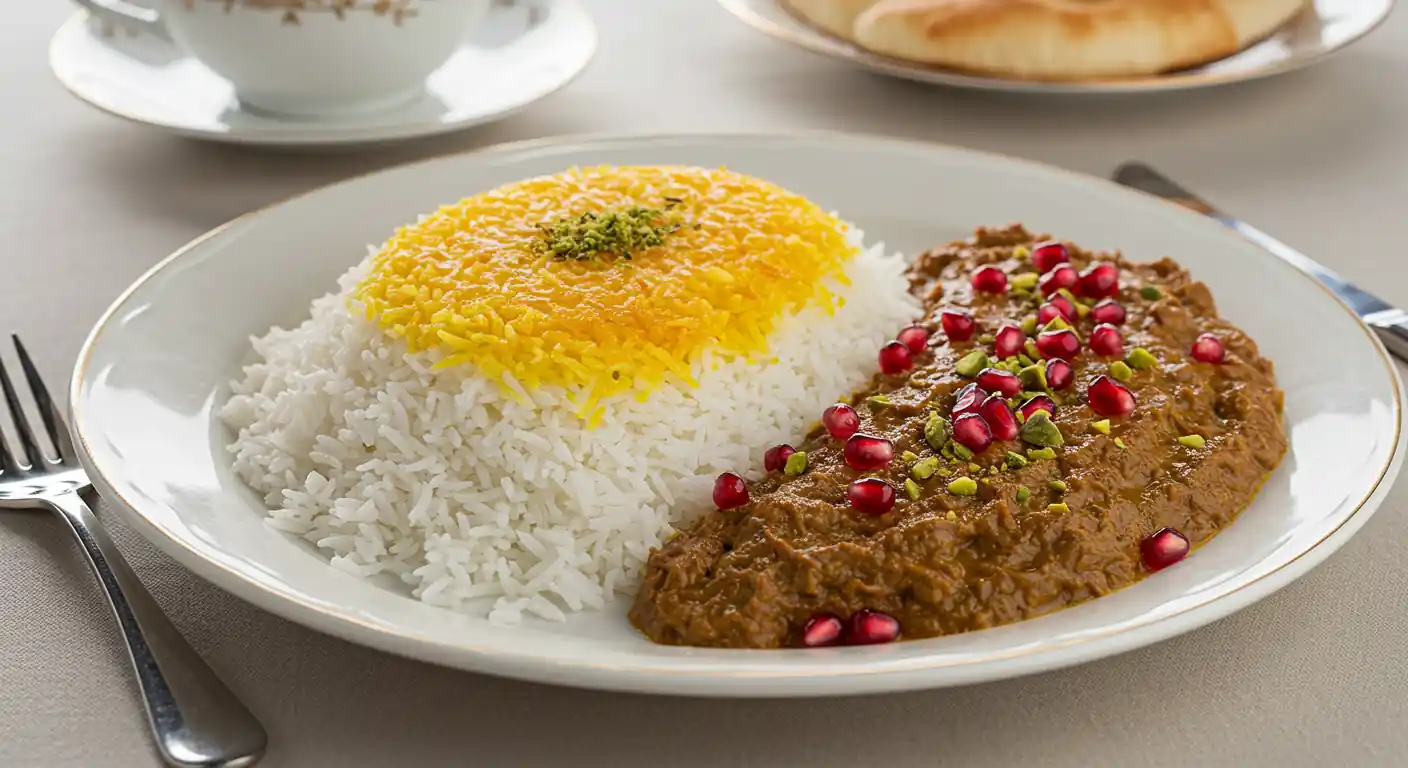
- Duck: As mentioned, duck is a traditional and particularly rich choice, lending an unparalleled depth of flavor to the stew.
- Lamb or Beef: Chunks of tender lamb or flavorful lamb or beef meatballs are other popular options. In Azerbaijan, a similar dish called fisincan plov is typically made with lamb meatballs.
- Fish: Interestingly, historical records from the 19th century list fish as one of the Fesenjan variations, showcasing its adaptability even then.
Deliciously Plant-Based: Vegetarian & Vegan Fesenjan
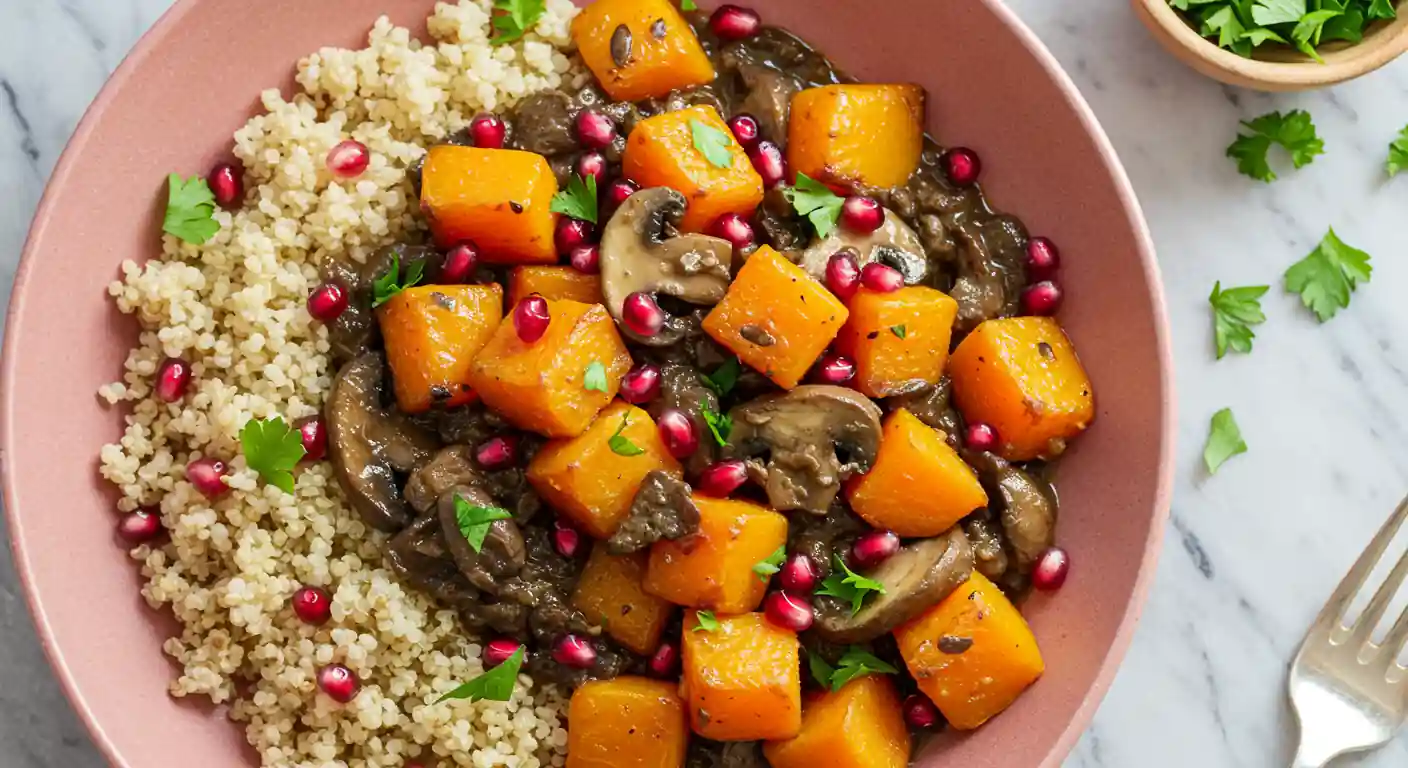
With the growing interest in plant-based eating, Fesenjan has proven wonderfully adaptable. The rich, complex sauce is a star in its own right and can beautifully complement various vegetarian and vegan ingredients:
- Eggplant: Roasted or stewed eggplant, a historical variation , adds a lovely creamy texture.
- Mushrooms: Meaty varieties like cremini, shiitake, or king oyster mushrooms provide an earthy, umami depth.
- Roasted Winter Squash or Pumpkin: Cubes of roasted butternut squash or pumpkin (another historical ingredient ) lend a natural sweetness and tender bite.
- Legumes: Chickpeas or hearty lentils can make the stew substantial and satisfying.
- Plant-Based Proteins: Tempeh or seitan, when properly prepared, can mimic the texture of poultry. The key is to allow the walnut-pomegranate sauce to shine, enveloping your chosen plant-based star.
Fesenjan in a Flash: Slow Cooker & Pressure Cooker Methods
While the traditional stovetop method yields incredible depth of flavor, modern kitchen appliances offer convenient alternatives for busy schedules. This adaptation reflects a desire to keep cherished traditional dishes relevant in contemporary kitchens.
- Slow Cooker: The slow cooker is well-suited to Fesenjan’s need for a long, gentle simmer. You might need to use slightly less liquid initially, as slow cookers trap moisture. If the sauce is too thin at the end, remove the lid and cook on high for the last 30-60 minutes to allow it to thicken.
- Pressure Cooker / Instant Pot: These appliances can significantly reduce the cooking time while still achieving fall-apart tender meat. After pressure cooking, you may need to use the “sauté” function to simmer and reduce the sauce to the desired consistency.
While these methods offer undeniable convenience, it’s worth noting that the very slow, gentle rendering of walnut oils and the melding of flavors on the stovetop contribute to a unique depth that might be subtly different when using high-heat, rapid cooking methods. It’s a balance of tradition and practicality.
Serving Fesenjan: A Feast for the Eyes and Palate
Presenting Fesenjan is almost as important as preparing it. Its rich color and enticing aroma deserve a beautiful presentation.
The Perfect Partner: Persian Rice (Polo/Chelo)
Fesenjan is almost invariably served with fluffy Persian steamed rice, known as polo or chelo. The rice acts as a perfect canvas, absorbing the luscious sauce. Plain white basmati rice is common, but saffron rice, with its delicate aroma and beautiful golden hue, is a particularly popular and elegant accompaniment that elevates the entire meal.
The Crown Jewel: Crafting Crispy Tahdig
No Persian feast featuring a khoresh (stew) like Fesenjan is truly complete without Tahdig. Tahdig, meaning “bottom of the pot,” is the prized, golden, crispy layer of rice (or sometimes thinly sliced potatoes or lavash bread) that forms at the base of the rice pot during steaming. Its delightful crunch provides a wonderful textural contrast to the soft, tender stew and fluffy rice. Making potato tahdig, for instance, generally involves parboiling basmati rice, then layering thinly sliced potatoes in an oiled pot, topping them with the parboiled rice, and steaming until the rice is cooked and the potatoes are golden and crisp.
Finishing Touches: Garnishes that Dazzle
A few simple garnishes can add a final flourish of color, freshness, and textural intrigue to your Fesenjan:

- Fresh Pomegranate Seeds (Arils): A generous sprinkle of vibrant ruby-red pomegranate seeds is classic and visually stunning, adding little bursts of juicy sweetness.
- Chopped Fresh Herbs: A scattering of finely chopped fresh parsley or cilantro lends a touch of green and a fresh aroma. Some also enjoy a hint of fresh mint.
- Toasted Walnuts: A few extra toasted and roughly chopped walnuts can echo the stew’s nutty base and add a pleasant crunch.
**
Fesenjan FAQs: Your Questions Answered
Here are answers to some common questions that might arise as you embark on your Fesenjan journey:
- Can I make Fesenjan ahead of time? Absolutely! In fact, many believe Fesenjan tastes even better the next day, as the flavors have more time to meld and deepen. Simply cool it completely, then store it in an airtight container in the refrigerator.
- How do I store and reheat leftovers? Leftover Fesenjan can be stored in an airtight container in the refrigerator for 3-4 days. To reheat, gently warm it on the stovetop over low heat, adding a splash of water or chicken stock if needed to prevent it from drying out or sticking. Fesenjan also freezes very well for longer storage.
- What if my Fesenjan is too bitter? Bitterness can sometimes arise from the specific brand of pomegranate molasses used, or if the walnuts were over-toasted or slightly burnt. Try to balance any bitterness by adding a bit more sweetness (sugar or honey, to taste). Ensure your walnuts are only lightly toasted to a fragrant golden brown, not dark brown or burnt.
- My Fesenjan didn’t get very dark. Why? The final color of Fesenjan depends on a few factors: the brand and concentration of your pomegranate molasses (some are naturally darker than others) and, crucially, the length of the simmering time. A longer, slow simmer allows the sauce to reduce, concentrate, and develop that characteristic deep, rich brown color.
- Can I use different nuts? While walnuts are the defining nut for classic Fesenjan, giving it its signature flavor and texture, some historical variations did mention almonds. A few modern vegan adaptations also use almonds. However, for the most authentic and traditional Fesenjan experience, walnuts are indispensable.
The Enduring Allure of Fesenjan
Fesenjan is more than just a recipe; it’s a culinary experience that tantalizes the senses and warms the soul. Its unique and unforgettable blend of sweet, sour, and nutty flavors, combined with its rich history and profound cultural significance, makes it a dish truly worth celebrating. Beyond its incredible taste, Fesenjan also offers nutritional benefits, with walnuts providing healthy fats, protein, and fiber, and pomegranates contributing valuable antioxidants.
Cooking Fesenjan is an act of love, a patient unfolding of flavors that rewards you with a dish that is both comforting and sophisticated. We hope this guide has inspired you to embark on your own Fesenjan culinary adventure. May you enjoy the process of creating this beloved Persian stew and the joy of sharing it with your friends and family. Nooshe Jan! (Enjoy your meal!)



